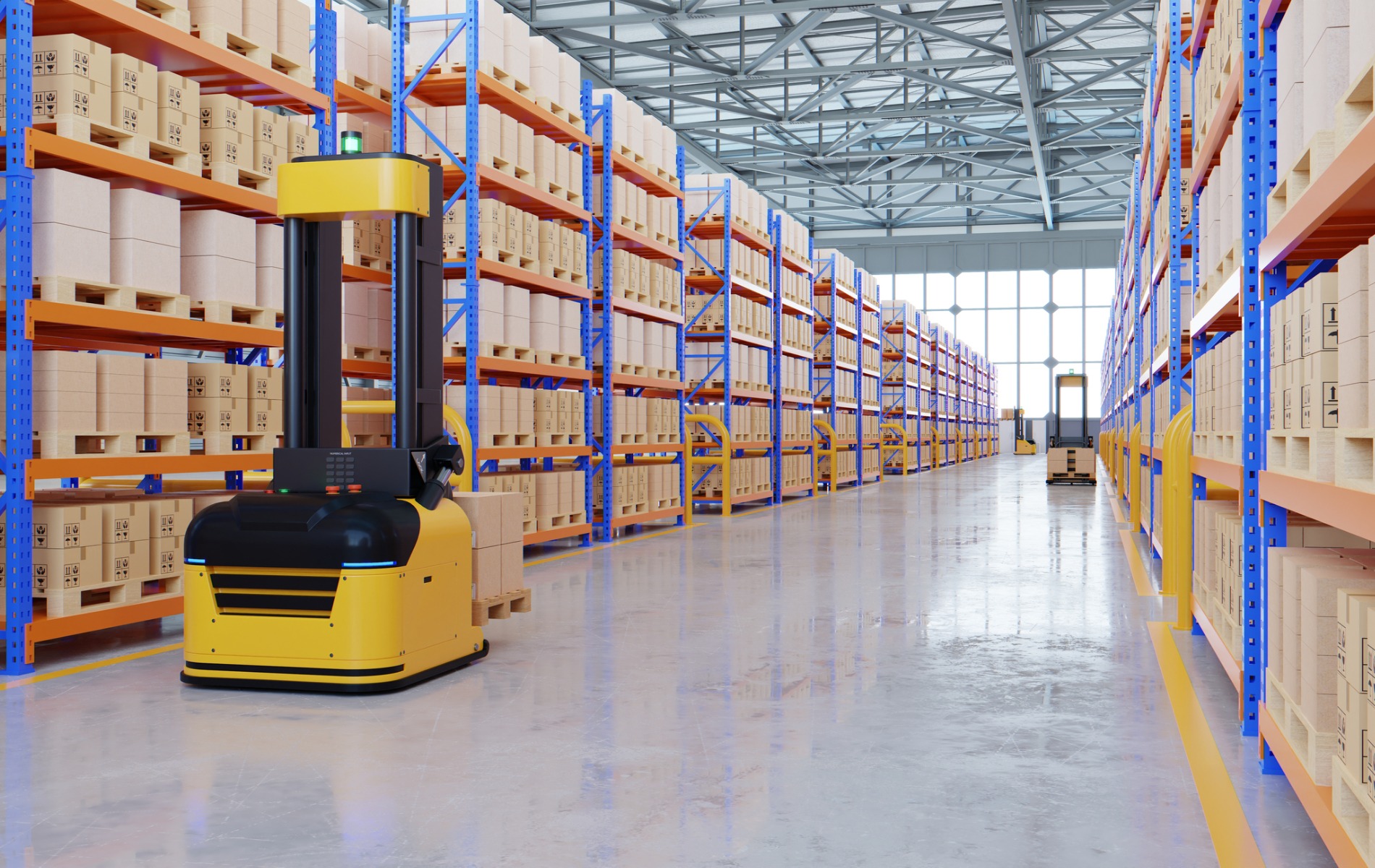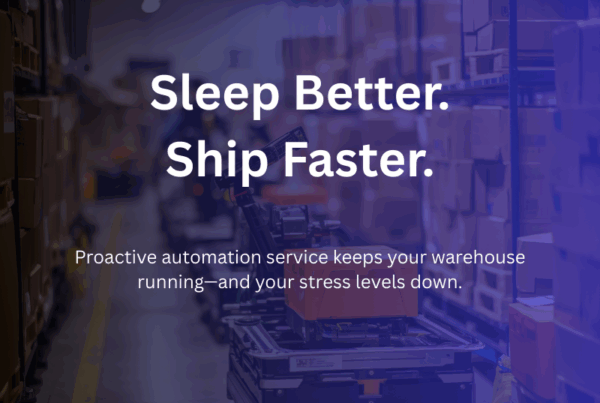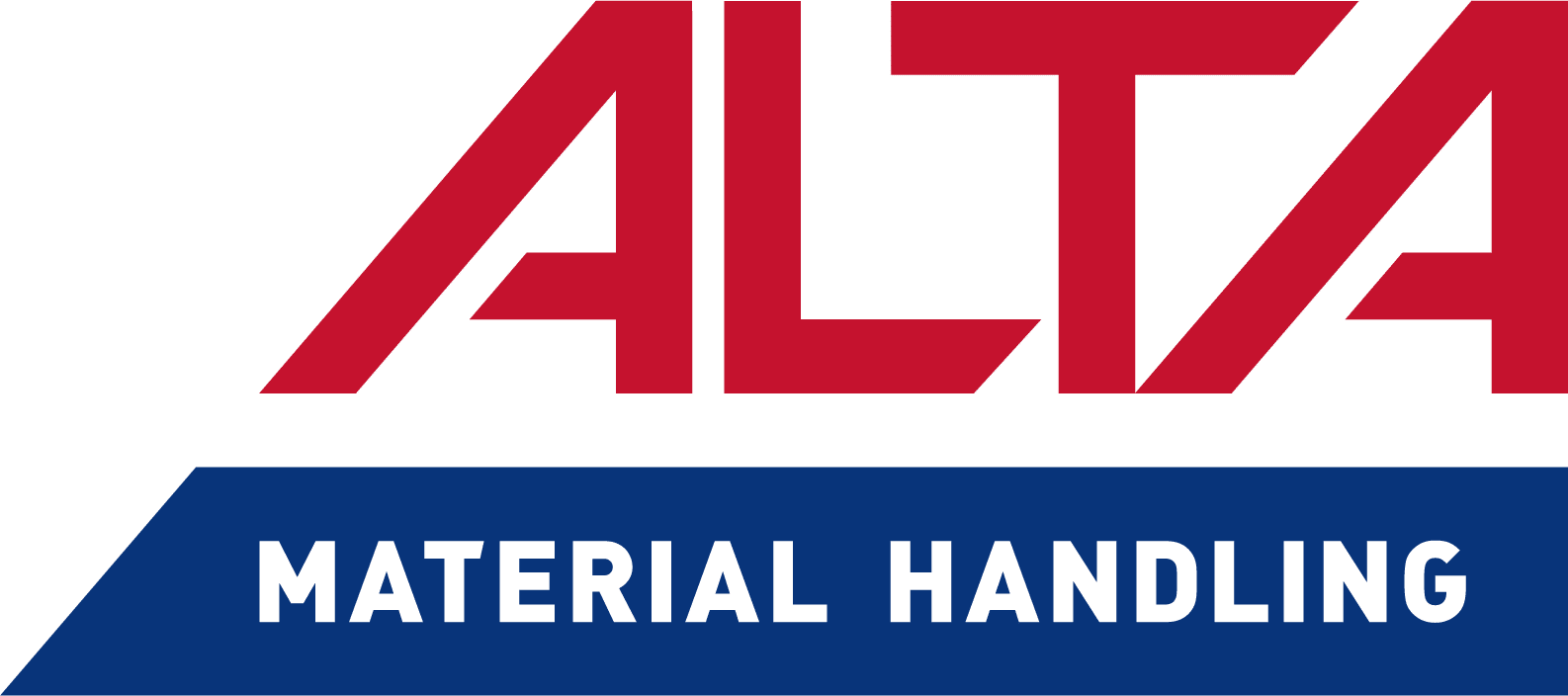Automated Guided Vehicles (AGVs) are wheel-based, autonomous material handlers. They are both versatile and affordable and are used in such a wide variety of industries that MH&L named them the “backbone” of.
When considering adding or upgrading automation to existing systems, AGVs have the benefit of quick implementation and little downtime. All automation offers improved throughput and accuracy, and lower labor and operational costs – but selecting and properly implementing the right automation is key to realizing the system’s ROI.
AGVs are among the best options available for integrating into a facility that is already up and running. However, choosing the right AGV for a particular facility’s processes can be a daunting task. And, at the end of the day, there are alternatives that may better suit your needs, and we’ll discuss some of those at the end of this article.
The Benefits of AGVs over Traditional Labor
Automation, including AGVs, offers many benefits over a traditional labor force, from increased throughputs and accuracies to lowered utility costs.
Increased productivity
As load carriers, AGVs are employed in what is often very physically demanding work. While their batteries do have to be changed or charged, AGVs don’t slow down or make mistakes because they’re tired. They are programmed to operate along the most efficient paths and don’t get distracted or caught in conversation. And once a system is implemented, more units can be added with zero time needed for on-boarding – smoothing payroll issues in facilities with a history of high turnover.
Reduced operational costs
While AGVs do have up-front costs, those costs are less than many other automated systems and pay for themselves in lower and more consistent operational costs. This consistency makes financial planning easier. In the material handling industry, labor accounts for as much as 50% of the operational costs in a typical warehouse. Traditional labor can be unpredictable, requiring sick pay, personal days, and vacation time. Personnel can take weeks to properly train, only to then be poached by competitors. AGVs not only work more efficiently than a traditional labor force, but eliminate the hassles of dealing with the unpredictable nature of human labor.
Safety
The work AGVs often do is heavy, repetitive lifting. Removing these tasks from the traditional workforce means improved morale and lowered instances of over-use injuries such as strains, sprains, and twists. It also prevents some of the industry’s worst accidents, such as fatalities due to driving a lift with an elevated load. At the same time, with their full suite of safety sensors, AGVs can navigate busy environments more safely than a person could. When confronted with an obstacle, an AGV will stop and wait for the path to clear – it will never make a bad decision to continue moving because of confusion or a demand to use its right-of-way.
Automatic line balancing
Combined with a robust controller, AGVs are part of a system that automatically balances production and warehousing lines. Because the AGV is controlled by the facility’s management software, the command-and-control system knows which loads need to be moved where, and how quickly, to balance operator performance with the delivery of the materials they need.
Costs compared to similar automation
In the past two decades, automation of every sort has become both more modular and scalable. This has been driven by consumer demand, the increased capacity of computers, and the increased miniaturization of robotics. However, especially for facilities that are already in operation, AGVs offer advantages that other automation – no matter how modular – can’t beat. Where other systems require that their area be non-operational during installation, AGVs require little change to the existing infrastructure, allowing the facility to maintain maximal uptime.
Lowered utilities
AGVs can lower utility costs and increase uptime in a number of ways. Because they can operate in conditions that people would find uncomfortable or even dangerous, product can be moved – and production continued – while it or its environment is too hot, cold, or dark for people to work comfortably. This can mean leaving off the lights or air conditioning in a warehouse while AGVs are still operating at full capacity.
Damaged infrastructure
While safety is by far the more important issue, industrial vehicles also damage infrastructure. A moment of distraction by a forklift driver might costs tens of thousands of dollars or more in damages. OSHA – who tracks injury accidents – cites human error as the most common cause of accidents, and recommends better, more consistent training to decrease their frequency… but automation doesn’t need to be trained, doesn’t forget what it’s learned, and doesn’t confuse the gas for the brakes or its left from its right.
Alternatives to AGVs
While AGVs are versatile and affordable systems, they aren’t perfect for every application, and some of their alternatives may better suit your needs.
Autonomous Mobile Robots (AMRs)
On their face, Automated Guided Vehicles (AGVs) and Autonomous Mobile Robots (AMRs) look very similar. They are both load carriers that operate independently.
The primary difference is that AGVs navigate along a fixed route, and their navigation is mostly capable of “Start/Stop” commands.
AMRs, on the other hand, operate more intuitively, using more robust software, GPS, and mapping. They are better at working collaboratively with people in changing environments, where obstacles may appear suddenly in front of them or shift from day to day.
Conveyors
There are many kinds of conveyors each designed for its own purpose, from moving heavy bulk material to fine powders and everything in between. They can be used to rapidly sort small pieces, as part of a pick-to-light system, and in many other ways.
Conveyors are an efficient, affordable, versatile system. When employed in the right facility for the right tasks, they offer many of the same benefits as AGVs – increased throughput and accuracy, and lowered costs and improved safety.
Perhaps the greatest drawback to a conveyor system is the space they take up. While the route an AGV uses is still open floor, a conveyor system blocks floor space and prevents it from being used for any purpose other than the conveyor belt.
On top of that, during implementation the area the conveyor takes up is out of commission. In facilities that are already in operation, this can add a prohibitive amount of cost to the integration of the system.
Automated Storage and Retrieval Systems (AS/RSs)
Automated Storage and Retrieval Systems (AS/RSs) are designed to store inventory as densely as possible, and to retrieve it as quickly and accurately as possible.
AS/RSs are defined by the manner in which they store and retrieve items.
- Unit-load AS/RS – Unit-load AS/RSs can reach as much as 100 feet tall, and handle loads of up to 5,500lbs. Load handlers are attached to masts which travel between narrowly spaced aisles, rapidly pulling merchandise into and out of densely packed storage.
- Mini-load AS/RS – Mini-load AS/RSs are the smaller, more modular cousins to Unit-loaders. Functionally similar, they feature a smaller Storage and Retrieval Machine (SRM) that can be used for small parts in manufacturing, or eaches in warehousing.
- Shuttle-based AS/RS – Businesses with strict space requirements, such as cold storage, can find implementing automation challenging; shuttle-based AS/RSs provide the flexibility they need.
- Carousels – Carousels act like Lazy Susans or Ferris wheels, moving bins of goods either horizontally or vertically, delivering them to employees.
- Vertical-lift Modules – Vertical-lift modules are enclosed systems that consist of two columns of shelves. Between these shelves, an automatic inserter/extractor stores and retrieves items.
In the past, AS/RSs were prohibitively expensive. As technology has advanced – and demand increased – AS/RSs have become both smaller and more modular, bringing them to more diverse markets.
Want to learn more about Automatic Guided Vehicles? Contact us to talk details and strategies!
2x the volume and $100K in savings for a medical distributor.
PeakLogix helped Merit Medical double volume and increase productivity by 200% while maintaining staffing levels reducing overtime. The integration helped the facility achieve an additional $100,000 in annual savings on shipping and freight.





